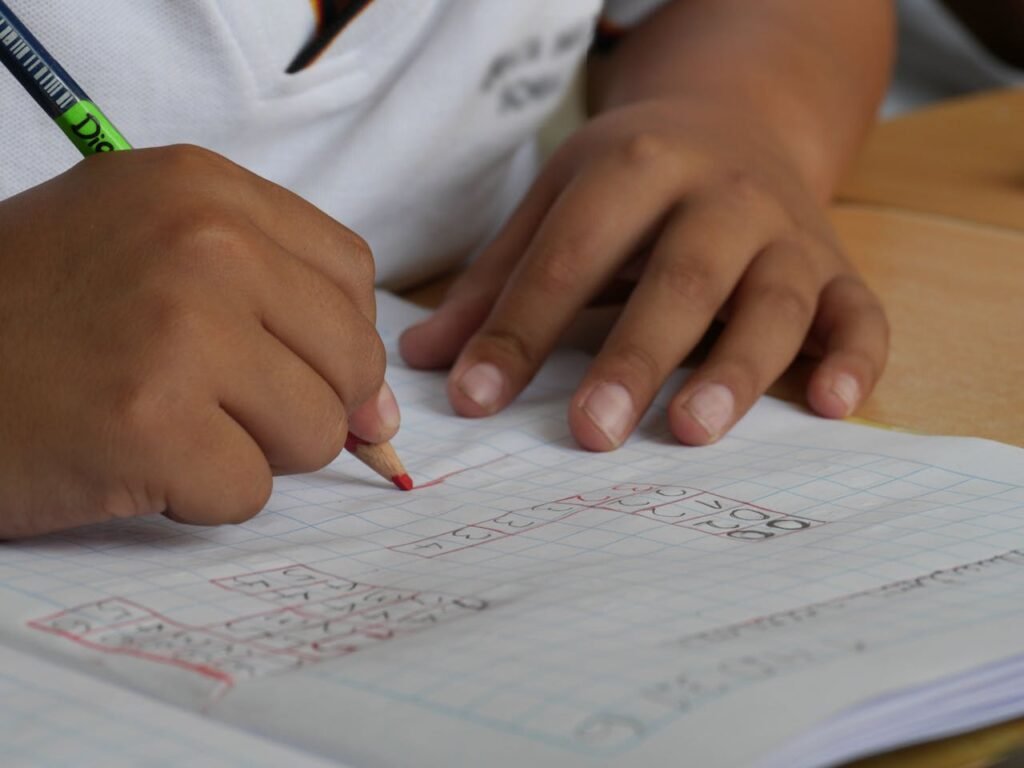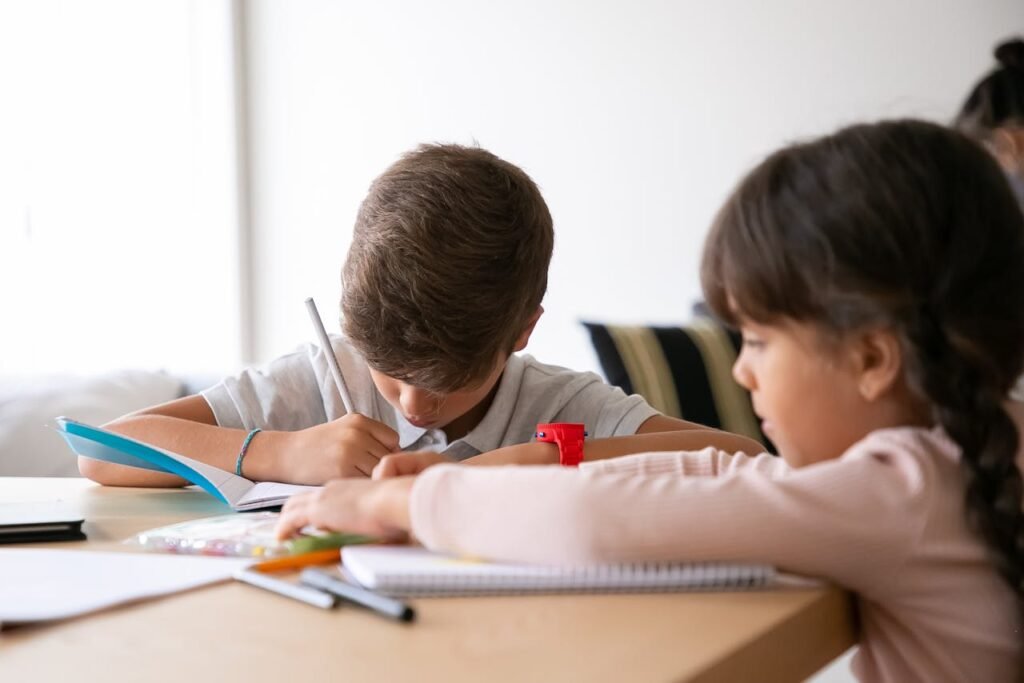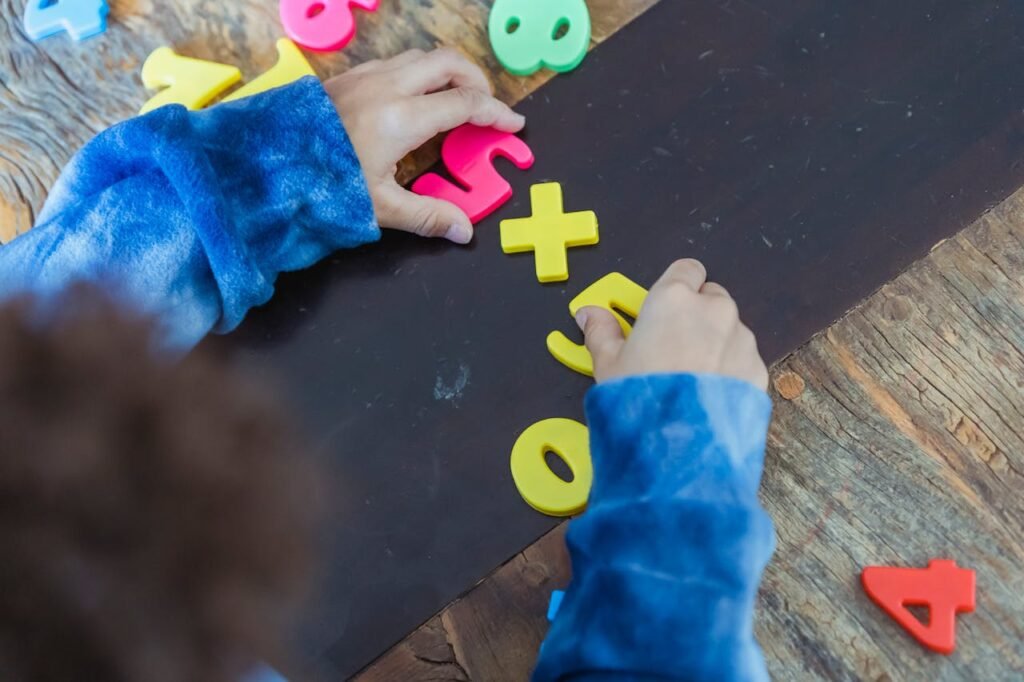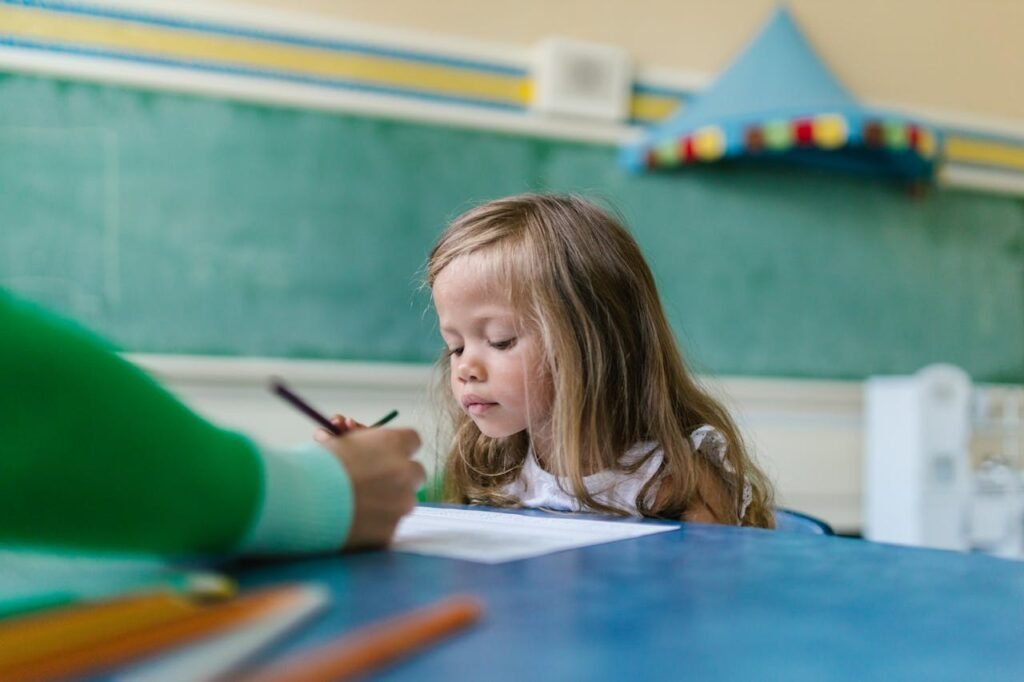Some kids love multiplication right away. For others, it’s a wall that gets taller every year. The numbers feel big. The steps feel messy. And when they try to keep it all straight, they just feel stuck.
But what if there were a way to break those big numbers into smaller, friendlier pieces? What if you could make multiplication feel more like a puzzle—and less like pressure?
That’s exactly what the box method does.
Also called the area model, this simple trick helps kids see the parts of a problem clearly. It lets them spread numbers out, solve bit by bit, and then bring everything together at the end. There’s no magic, no guessing—just good, clean thinking.
At Debsie, we use the box method with children all over the world. It works because it fits the way many kids learn best: with structure, space, and sense. Kids who used to feel nervous about multiplication start to say things like, “Oh, I get it now!”
Why the Box Method Feels Smart
Multiplying two numbers can feel hard when you just look at the whole thing at once. What if instead you could break the problem into little chunks and solve each chunk one at a time?
That’s exactly how the box method works. You draw a box and split it into sections. Each section holds a smaller multiplication step. Then you add the parts to get the final answer. It makes multiplication feel neat, simple, and under control.
Kids like it because it gives them space to breathe. They can write things clearly. They don’t feel rushed to remember steps. And most importantly, they start to understand how multiplication is built up from smaller parts—without getting overwhelmed.
How to Set Up the Box
Let’s practice with 23 × 14. Here’s how you build it:
- Underline the digits: break each number into tens and ones:
- 23 = 20 + 3
- 14 = 10 + 4
- Draw a two‑by‑two box: top row labels 20 and 3; side labels 10 and 4.
- Multiply inside each cell:
- Top-left: 20 × 10 = 200
- Top-right: 3 × 10 = 30
- Bottom-left: 20 × 4 = 80
- Bottom-right: 3 × 4 = 12
- Add all the boxes: 200 + 30 + 80 + 12 = 322. That’s the answer!
With one grid, you see each part, solve each part, then collect them. No hustle, no anxiety. Just clear thinking.
We call this the area model, and it gives a visual map of how multiplication breaks down. Kids learn to trust each piece—and the final result comes naturally.
Why the Box Method Helps Kids Learn

The box method is more than just a trick to solve multiplication. It’s a powerful learning tool because it teaches kids how to think, not just what to do.
Most children don’t struggle with multiplication because they can’t do math—they struggle because the steps feel confusing and the numbers feel too big. They’re told to line numbers up and carry digits, but they don’t always know why. That’s where the fear starts.
The box method stops all that.
It gives kids something they can see, break apart, and build back up. Suddenly, multiplication doesn’t feel like a guessing game. It feels like a puzzle with clear pieces. That makes all the difference.
It Makes Big Numbers Feel Smaller
Imagine being a child and trying to multiply 36 × 24. That’s a lot to handle at once. But the box method says, “Wait—let’s slow down. Let’s look at 30 × 20 first. That’s easier. Then we’ll handle the rest.”
Now, instead of one big problem, there are four small ones. And every small win builds a little confidence. That confidence stacks up, just like the box cells.
It Strengthens Place Value Understanding
Many kids mix up tens and ones when multiplying. The box method makes them label each part. They see that 30 × 20 is different from 6 × 4. They learn that each digit has a place and a meaning. They also begin to realize how place value affects the size of the answer.
This is not just useful for multiplication—it’s key to understanding division, decimals, and even fractions later on.
It Slows Down the Thinking (In a Good Way)
Fast math isn’t always smart math. Rushing leads to mistakes and fear. The box method gives children space to think. Each part of the problem is done with care, one square at a time. There’s no pressure to get everything right all at once.
Kids can pause after each cell. They can double-check their answers. They can even re-use steps they already solved. That kind of step-by-step thinking builds stronger problem-solvers—not just faster calculators.
It Builds Pattern Recognition
As kids solve more problems with the box method, they begin to see patterns:
- Multiplying by 10 always ends in zero
- 20 × 5 is just double what 10 × 5 would be
- 30 × 4 is like 3 × 4, with a zero added
These patterns stick in their mind. They start predicting answers. They estimate better. They become more fluent with numbers because they understand how numbers work—not because they memorized tricks.
Moving from Small to Large Numbers

Once your child feels comfortable with 2‑digit numbers, you can slowly introduce larger ones—like multiplying a three‑digit number by a two‑digit number. The process stays the same:
Take 125 × 34, for example:
- Break 125 as 100 + 20 + 5
- Break 34 as 30 + 4
- Draw a 3‑by‑2 box
Fill each cell:
- 100 × 30 = 3,000
- 20 × 30 = 600
- 5 × 30 = 150
- 100 × 4 = 400
- 20 × 4 = 80
- 5 × 4 = 20
Add all parts:
3,000 + 600 + 150 + 400 + 80 + 20 = 4,250
The magic is the same—you simply solve each part, then bring them together. It’s a clear, gentle way to build confidence with big numbers.
Avoiding Common Mistakes
Even with the box method, mistakes happen when setup or addition steps get skipped. Here’s how to guide a child through them calmly:
- Missing a cell: If one box is blank, the sum will be too small. Encourage them to check their grid by whispering: “Did we do every box?”
- Label mismatch: Sometimes tens and ones get swapped. If the result seems too big or too small, revisit the row and column labels.
- Addition slip‑ups: After filling boxes, double‑check adding with a number line or counting on. You can say, “Let’s see if those boxes add up right—let’s check in pairs.”
In each case, we don’t say “wrong”—we say, “Let’s check together.” Gentle guidance helps kids learn error‑checking, not panic.
Practice That Feels Like Play
At Debsie, we mix learning with play to make this method stick:
- Puzzle cards: A half‑filled box shows only three parts. The child must fill the missing one and give the total. It feels like a game, not a worksheet.
- Partner games: Two kids fill the same multiplication and race to add their boxes. They compare their final sums—if they match, they both win.
- Story problems: Use everyday scenarios like packs of pencils or crates of apples. Draw the box, fill the parts, and show how multiplication solves real tasks.
These approaches turn practice into something children want to do—not something to dread.
Helpful Tips to Teach the Box Method
Here are a few friendly suggestions to make the method stick:
- Always start with a phrase like “Let’s split the numbers.” It cues the brain that partitioning is coming.
- Use colors or pens to label tens and ones distinctly. Visual separation makes mixing up cells less likely.
- Encourage children to say the parts out loud—“100 times 30 is three thousand.” Speaking it helps memory and focus.
- Celebrate the small wins—“You got every cell right!” or “Your addition was spot on!” helps build a confident math brain.
These little habits make big difference in solid learning.
Why the Box Method Builds Strong Number Sense

The box method isn’t just a way to get an answer—it helps children understand how numbers work together.
When kids split numbers, they see that 20 × 4 is the same as two tens multiplied by four. They understand that multiplying by 10 adds a zero. They see patterns inside multiplication. And over time, they build deeper number sense, not just memory.
This understanding serves them well:
- They can estimate easily.
- They can solve related math problems faster.
- They’re prepared for algebra—where they combine similar parts and work with areas.
Once children get the box method, they begin to think of multiplication in chunks—not as a scramble of digits.
Using the Box Method in Real Life
Math doesn’t live only in textbooks or worksheets. It’s all around us—in the grocery store, the kitchen, while packing bags, or even setting up a party. The box method gives children a way to solve everyday multiplication problems using logic and structure.
And when a child sees that math helps them solve real problems, it starts to feel relevant. It becomes something they want to use—not just something they’re told to do.
Packing and Planning
Let’s say your child is helping pack gift bags for a birthday party. Each bag needs 6 candies, and you’re making 27 bags.
Instead of pulling out a calculator, you ask:
“Let’s use a box to figure out 27 × 6.”
Break 27 into 20 and 7.
Now draw the box:
- 20 × 6 = 120
- 7 × 6 = 42
Total = 162 candies
Now the child knows how many to count—and feels proud they figured it out themselves.
Shopping Smarter
If your child wants to buy several packs of pencils, each costing $13, and they need 14 packs, they can use the box method to figure out the total cost.
Break 13 into 10 and 3, and 14 into 10 and 4.
Build the box, solve each part:
- 10 × 10 = 100
- 10 × 4 = 40
- 3 × 10 = 30
- 3 × 4 = 12
Add: 100 + 40 + 30 + 12 = 182
They now know how much money they’ll need—and they figured it out step by step, without stress.
Baking and Recipes
In the kitchen, multiplication pops up all the time. Imagine you’re making 9 trays of cookies, and each tray holds 18 cookies.
Break it down:
- 10 × 9 = 90
- 8 × 9 = 72
Total = 162 cookies
Instead of feeling lost in a big number, kids see how parts come together—and how their math connects to something yummy (which always helps).
Building and Creating
Say your child is building a LEGO wall or a cardboard city. Each section needs 25 bricks, and they’re building 16 sections.
Break 25 into 20 and 5. Break 16 into 10 and 6.
Now create the box and multiply:
- 20 × 10 = 200
- 20 × 6 = 120
- 5 × 10 = 50
- 5 × 6 = 30
Add: 200 + 120 + 50 + 30 = 400 bricks
That’s hands-on math—and it teaches more than just numbers. It builds planning skills, focus, and smart thinking.
Scaling Up from Boxes—Beyond Basic Multiplication

Once your child masters two-digit by two-digit multiplication using the box method, it’s time to explore how to scale this for bigger numbers—and still feel confident.
Imagine you’re multiplying 245 × 312. Yes, it looks big, but the method stays the same:
- Split the numbers:
- 245 = 200 + 40 + 5
- 312 = 300 + 10 + 2
- Draw a three-by-three grid. Label rows with 200, 40, 5 and columns with 300, 10, 2.
- Fill each cell gently by solving:
- 200 × 300 = 60,000
- 200 × 10 = 2,000
- 200 × 2 = 400
- Next row: 40 × 300 = 12,000, 40 × 10 = 400, 40 × 2 = 80
- Third row: 5 × 300 = 1,500, 5 × 10 = 50, 5 × 2 = 10
- Add all parts with calm care:
60,000 + 2,000 + 400 + 12,000 + 400 + 80 + 1,500 + 50 + 10 = 76,440
By working step by step, your child sees how big multiplication is just many small parts combined—not one big trick. This builds powerful understanding and keeps mistakes small, not scary.
Transitioning Toward Mental Math
The box method can also help bridge the gap to doing some multiplication in the head. Here’s how your child can grow toward mental math quickly—a natural shift.
With plenty of practice, they’ll begin to remember patterns like “40 × 2 is 80” or “5 × 300 is 1,500.” Over time, they won’t need to draw the full box—just think in chunks.
For example:
- With 245 × 312, they might “see” it in their head as:
- 200 × 300 = 60,000
- 200 × 10 = 2,000
- 5 × 300 = 1,500
- And so on…
They can stack these parts mentally and add them—slowly at first, but confidently soon after. It’s like building math routines, not just doing steps on a page.
At Debsie, our teachers gently encourage this kind of thinking after kids are steady with drawn boxes. Over time, they ask, “Do you want to try it in your head?” And the learners feel ready—because they already understand, deep down.
Understanding Why the Box Method Works—The Moment It Clicks
Here’s what parents and teachers often notice when children really “get” the box method: it gives them a mental picture of multiplication as an area. It connects numbers to space and patterns.
When they realize a box’s left side is tens or hundreds and the top is tens or hundreds, multiplication becomes something you build visually. It’s like seeing a puzzle snap into place.
That moment of clarity changes everything. Numbers stop being random. They become parts of a picture. And because the box shows each part, memory becomes easier too.
When that shift happens, the child doesn’t dread big problems. They see them as combinations of familiar parts—and they can actually do them, with steadiness and pride.
How Debsie Helps Kids Learn and Enjoy the Box Method

At Debsie, we don’t just teach the box method—we make it click. And more importantly, we help kids enjoy the process. Because when a child enjoys learning, that’s when real growth begins.
Our goal isn’t to rush through the steps. It’s to make each child feel smart, seen, and proud of what they’re building with numbers.
Here’s how we do it:
We Make the Math Visual and Playful
Many kids are visual learners. That’s why we use real whiteboards, grid paper, math tiles, and even digital boxes in our lessons. The moment a child sees the numbers split into parts, the mystery starts to fade. They don’t feel lost anymore—they feel in control.
We let them color code boxes, draw their own, and even decorate them with characters or little stories: “This cell is Bob’s Bakery. He makes 200 cookies!” That kind of playfulness turns a math grid into a small world they understand—and want to explore.
We Keep the Pace Personal
No two kids are the same. Some love solving quickly. Others need time to sit with each step. Our Debsie teachers know how to adjust on the spot. We slow down when we see confusion. We cheer the moment a child connects the dots. And we celebrate not just correct answers—but brave tries and thoughtful thinking.
Because regrouping, partitioning, and multiplying aren’t just math skills—they’re big brain steps. And we treat each one with care.
We Turn Practice Into Games
At Debsie, repetition never means boring. Instead of worksheets, we play games like:
- “Box Detective”: where a box is half-filled and the child has to figure out the missing numbers.
- “Math Race Pairs”: where two learners solve the same box method problem and compare results.
- “Box Challenge Day”: where kids team up to build the biggest, clearest box model for a funny problem, like “Aliens multiplying spaceships!”
These games make the method feel fun. And when a child is having fun, they remember the steps naturally.
We Guide With Encouragement, Not Pressure
Most importantly, our teachers never say “You’re wrong.” We say, “Let’s see what your brain was trying to do.” That makes a huge difference.
Children feel safe to try. They’re not scared to make a mistake—because every mistake is a clue, a doorway to learning.
Over time, we see something amazing happen. The same child who said, “I hate multiplication,” now leans forward and says, “Can I do the next one?”
That’s not just success in math. That’s a mindset shift.
Real Example: A Child’s Progress
Meet Anya, a 10-year-old who struggled with long multiplication. When she started using the box method, things began to change.
First, she built each cell carefully. Then she realized she could estimate before adding. Soon she checked her work with ease. And finally, she started to help others see how the method worked.
She went from saying, “I hate multiplication,” to asking to use the box method in tests. That kind of mindset shift happens when a child understands—not just memorizes.
Final Thoughts: A Simple Box, A Big Confidence Boost
The box method may look like a grid of numbers—but it’s really a gateway to something much more powerful. It gives children a new way to see multiplication, one that makes big numbers feel friendly and problems feel possible.
With each part they solve, they build not just answers—but understanding.
With each box they complete, they grow not just in math—but in confidence.
At Debsie, we see this shift every day. Kids come in unsure, even nervous. But once they see the steps, once they feel success—something clicks. They start to believe in themselves. They start to say, “I can do this.”
And when a child feels that? There’s no stopping them.
👉 Sign up for a free Debsie class and let your child experience multiplication that actually makes sense
👉 Explore our full range of subjects—from math to science to coding—all taught with care, clarity, and fun
Read Next:
